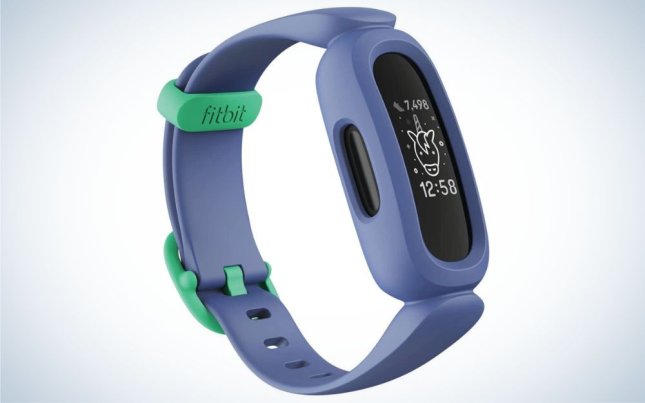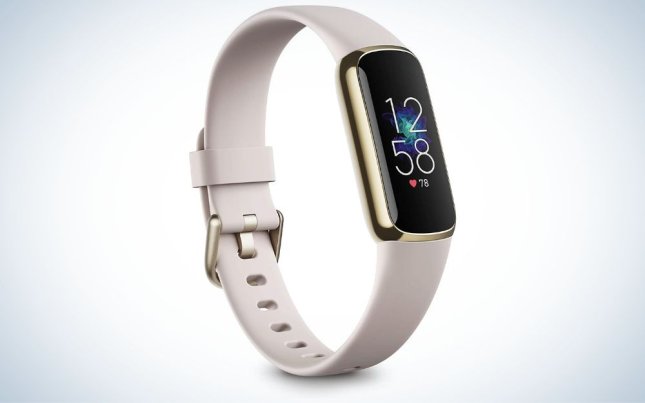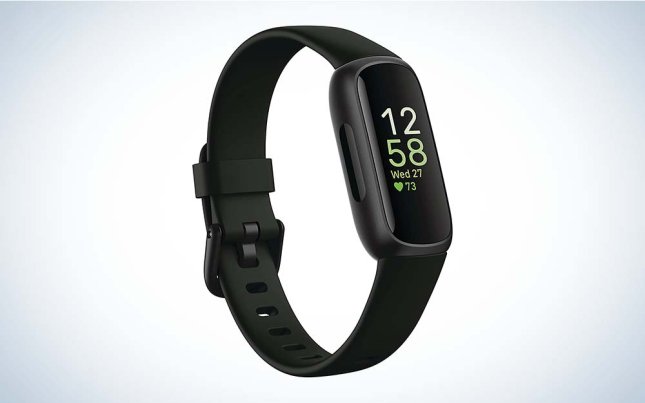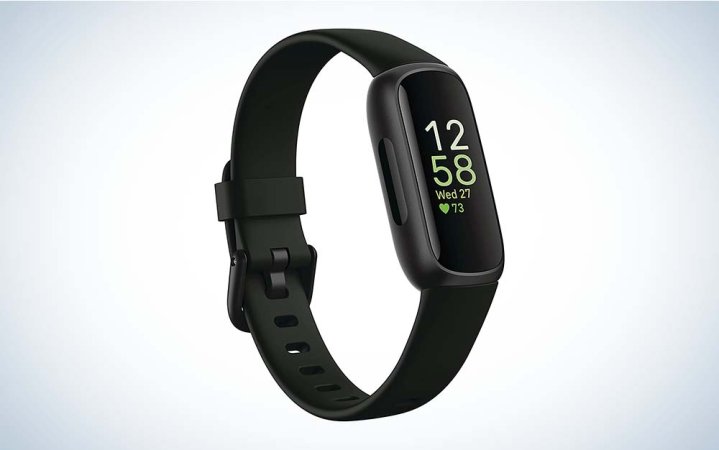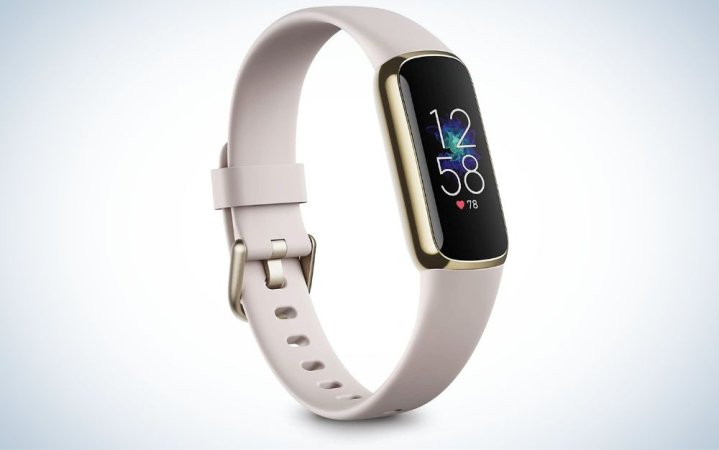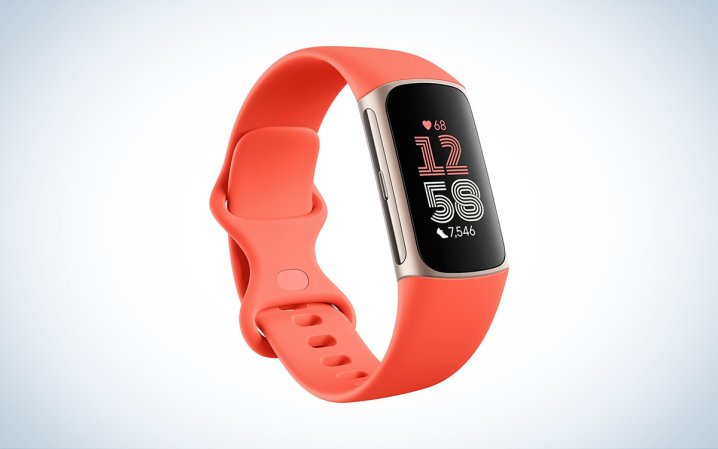We may earn revenue from the products available on this page and participate in affiliate programs. Learn more ›

Fitbits for kids can be a great way to encourage children to develop healthy habits and active lifestyles from an early age. Beyond serving as motivational tools to get moving, they also help you monitor how much exercise your child is getting. Some even offer kid-specific features to gamify movement, making it fun to get active. Fitbits don’t just monitor exercise, though. They can help keep track of stress levels, monitor heart rate, store music, receive phone notifications, and even track sleep. No matter your child’s age, there’s something for them on our list of the best Fitbits for kids.
- Best overall: Ace 3
- Best for teens: Inspire 3
- Best for style: Fitbit Luxe
- Best with GPS: Fitbit Charge 6
- Best Fitbit alternative: Amazfit Band 7
How we chose the best Fitbits for kids
When selecting the best Fitbits for kids, we started by comparing the entire Fitbit lineup, many of which we have actually reviewed. We focused on models offering kid-friendly features, reasonable pricing, and designs that appeal to a younger crowd. While one model is specifically made for kids, other models can appeal to slightly older children and teens with different needs. We also included a Fiitbit alternative if you want a budget-friendly fitness tracker outside the Fitbit brand.
The best Fitbits for kids: Reviews & Recommendations
A Fitbit, one of the leading brands of activity trackers, can motivate your child to get the recommended daily amount of exercise. According to the Centers for Disease Control, kids from ages 6 to 17 need about 60 minutes of physical movement per day to stay healthy. Fitbits can easily help track those minutes to ensure adequate movement. Below are the best Fitbits for kids, no matter what their current level of activity may be.
Best overall: Ace 3
Best overall
Pros
- 8 days of battery life
- Bedtime and alarms
- Parent and Kid View
- Water-resistant
- Interchangeable bands
Cons
- Pricey for young kids
- No heart rate monitoring
Why it made the cut: With a touchscreen display, eight days of battery life, impressive memory, and Parent and Kid View, this is the obvious choice for most young ones.
Specs
- Ages: 6+
- Water resistance: Up to 164 feet
- Battery life: Up to 8 days
- Charge time: 2 hours
The only Fitbit specifically made for children, the Ace 3 has many great features relevant to young ones. With eight days of battery life, a touchscreen display, bedtime alerts, reminders to move, a step counter, and gentle alarms to wake your kids up, this Fitbit comes fully stocked.
One of the most kid-friendly aspects of the Ace 3 is the fun virtual badges, animated clock faces, and personalized avatars that add a healthy sense of competition and play to their activity. Your kids can also personalize their Fitbit with interchangeable accessories, like Minions bands, for an added fee.
There’s both parent and kid view, and it’s also water-resistant up to 164 feet, so they can even wear it while swimming. It’s by no means cheap, but with all the bells and whistles, we think it’s worth the investment.
Best for teens: Inspire 3
Best for teens
Pros
- Easy to use and accessible
- Affordable
- Up to 10 days of battery
- Six-month Fitbit Premium membership included
- Competitive games
Cons
- Screen may be hard to read in the sunlight
- Band wears after some time
Why it made the cut: Easy to use and accessible for teens with a one-year premium trial included, this is a great starter tracker for young adults looking to track calories, heart rate, steps, and more at home and at school.
Specs
- Ages: 13+
- Water resistance: Up to 164 feet
- Battery life: Up to 10 days
- Charge time: 2 hours
The Inspire 3 is Fitbit’s most accessible and easy-to-use fitness tracker, which makes it a solid option for teens. It’s also a New Fitbit users get a six-month free trial of Fitbit Premium so they can have access to guided meditations, exercises, and accountability to make their fitness and health journey even easier.
The Inspire 3 connects to a smartphone, providing call, text, and app notifications right on your teen’s wrist. That means they won’t have as much of an excuse for ignoring your calls or texts. Come nighttime, it offers a sleep mode to pause notifications and turns the screen off so that their sleep isn’t interrupted.
With its sleek design and simple interface, Inspire 3 is a great starter Fitbit for tracking steps, heart rate, distance, calories, food logging, menstrual health, sleep, and more. This waterproof smartwatch can go as deep as 164 feet, so your teen can wear it during swim team practice to keep track of their workouts. The battery lasts up to 10 days, and there are even fun games in the app like Get Fit Bingo, for more competitive-minded teens.
Best for style: Fitbit Luxe
Best for style
Pros
- Call/text notifications
- Connects to phone GPS to track pace and distance
- Menstrual health tracker
- Stylish design
- Stress management features
Cons
- Pricey
- Website says the battery lasts five days, but depletes quicker depending on use
Why it made the cut: Fashion-forward and stylish, the Fitbit Luxe features a menstrual health tracker, several stress management tools, and sleep aids useful for teens.
Specs
- Ages: 13+
- Water resistance: Up to 164 feet
- Battery life: Up to 5 days
- Charge time: 2 hours
Swimproof, slim, and fashion-forward, the Fitbit Luxe is the perfect tracker for teens who want to be more hands-on (or is that wrists-on?) with their health. It not only takes care of all-day tracking but also connects to a phone’s GPS to track pace and distance and allows wearers to stay connected with friends via call and text notifications.
If your teenager has periods, they can track ovulation, record period symptoms, and log flow with the built-in menstrual health tracker, which can help them feel informed about their menstrual health. It also has several stress-management features, such as guided breathing, to help with mood and stress levels. We want to note that teenage girls have enough societal pressure, and we love that Fitbit’s team is committed to helping teenage girls stay healthy and happy without focusing on striving for perfection.
It’s not the cheapest option, but the Special Edition gorjana Soft Gold Stainless Steel Parker Link Bracelet doubles as a bracelet that goes with every outfit, making the perfect birthday or holiday gift!
Best with GPS: Fitbit Charge 6
Best with GPS
Fitbit Charge 6
Pros
- Comfortable to wear 24/7
- Built-in GPS with access to Google Maps
- Bigger touchscreen display
- Heart rate tracker
- Built-in YouTube Music controls
Cons
- Music controls require a subscription
- Expensive compared to other options
Why it made the cut: This Fitbit with GPS can track over 40 workouts, including swimming, and has a built-in GPS system for more accurate location and distance information during workouts.
Specs
- Ages: 13+
- Water resistance: Up to 164 feet
- Battery life: Up to 7 days
- Charge time: 2 hours
Fitbit’s most advanced fitness and health tracker yet, this Fitbit with GPS comes with tons of elite features in a slim and lightweight design. It features an on-wrist ECG app, step tracker, calorie tracker, automatic exercise recognition, swim-tracking, and sleep monitoring. It also allows your kids to set goals and it buzzes when they hit certain heart rate zones. Plus, the main draw: built-in GPS for tracking routes and workouts.
The built-in GPS allows for much more accurate data related to distance and pace during workouts. The Charge 6 also comes with Google Maps, which provides turn-by-turn directions right on their wrist, giving you peace of mind that your child won’t get lost on a run or bike ride.
Fitbit also included YouTube Music controls on the Charge 6, though you will need a subscription to access that feature.
Best Fitbit alternative: Amazfit Band 7
Best Fitbit alternative
Amazfit Band 7
Pros
- Long battery life
- Accurate heart rate data
- No subscription required to access all features
- Affordable
Cons
- Touchscreen is finicky
- Lack of buttons takes time to get used to
Why it made the cut: This budget-friendly Fitbit alternative offers accurate heart rate data, movement goals, and a vibrant display without the subscription fee.
Specs
- Ages: 13+
- Water resistance: Up to 164 feet
- Battery life: Up to 18 days
- Charge time: 2 hours
While Fitbit makes some excellent fitness trackers, you’ll need a subscription to access all features and data. For many, that makes Fitbits for kids a less-than-ideal choice. The Amazfit Band 7 is a great alternative in part thanks to the lack of a subscription but also due to the initial budget-friendly price. You’ll spend less upfront and overtime with this cheap fitness tracker.
Despite the low price, the Band 7 has a lot to offer. Amazfit promises up to 18 days of battery life, and during my testing, I got 16 days or so with a daily workout. Of course, actual battery life heavily depends on how you use the watch and if you have the always-on display on, but it is still impressive for the price. It also charges quickly, so you can get back to tracking movement in no time.
The built-in BioTracker 3.0 PPG biometric sensor tracks heart rate and blood oxygen levels. I found the heart rate data to be very accurate during runs and weightlifting sessions, even when compared to more expensive hiking and Garmin watches. The watch uses that information to calculate VO2 Max, stress levels, and to track sleep. It also provides a PAI, or Personal Activity Intelligence, score, which gives you a picture of how active you are and what your activity level should be for you as an individual.
The Amazfit Band 7 can track 120 different workout types. That includes basics like running, cycling, and yoga but also more obscure things like kite-flying, jumping rope, and badminton. No matter what your child is into, there’s a good chance this fitness tracker can track it. It also pairs with a phone so that your kid can receive phone notifications on their wrist.
Check out our full review to learn more about the Amazfit Band 7.
What to consider when shopping for the best Fitbits for kids
The best Fitbits for kids will fall into the fitness tracker category due to the inherent lower price and slim design. While many of these options share features, there are still some key things to consider before purchasing a device for your child.
A quick note on the term “Fitbit”
For some people, the term “Fitbit” has taken on a more general meaning—it’s a catch-all that references any fitness tracker. It’s like how we often call plastic storage bags Ziploc bags. In reality, Fitbit is a specific brand that’s owned by Alphabet, Google’s parent company. We’re keeping this list almost entirely specific to that brand because the company makes a lot of excellent devices, but have included an alternative as well.
Battery life
Battery life is a key component of any device for kids. If their fitness tracker needs to be charged daily, there’s a good chance it won’t actually be worn very much. Most Fitbits promise a battery life of up to five days, but actual battery life is dependent on how your child is using the watch and what types of settings and features are turned on. You’ll want to consider how responsible your kid is—or how much you want to be hands-on with charging—and choose a watch with a battery life that matches.
Features
While Fitbit products have commonalities, some trackers come with unique features. It’s important to identify what you want to get out of your Fitbit. Do you want a hybrid tracker and smartwatch that can sync with a smartphone and offer more complex functionality? Or do you want simple fitness tracking? Do you need GPS built in? How important are stress management tools?
Sleep tracking may also be an important feature for your child. The Sleep Foundation says that sleep not only helps your child’s energy levels but also impacts a slew of other important developmental areas such as memory, focus, mood, learning, motor skill development, and overall happiness. Keeping track of their sleep can help you get your kids on a healthy sleep schedule, which will only have benefits down the road.
Luckily, Fitbit has a tool to help you narrow in on the best option for your particular needs. Take the company’s Fitbit quiz to help you make your decision.
Budget
How much are you looking to spend? While some budget Fitbits are around $80, they can go all the way up to several hundred, depending on features and frills like GPS tracking and smartwatch capabilities. The kid-specific Ace is one of Fitbit’s cheaper models, which makes sense since kids are prone to breaking and losing gadgets on the regular. Buying a kid a $250 smartwatch can be a real gamble.
Style
Your Fitbit’s style should reflect your child’s age and development. Some Fitbits, like the Ace 3, are meant for small children around six years, and others are meant for older teens, like the Inspire 3 or Luxe. A kid won’t wear something if they hate the way it looks.
FAQs
How long a Fitbit lasts depends on how you use and care for your device. With proper care, most Fitbits should last somewhere around two years.
Whether or not your 11-year-old (or any minor) can have their own Fitbit account depends on your country’s privacy laws. Mostly, parents and legal guardians can create a family account to monitor their kids’ accounts.
Yes, it is safe to wear a Fitbit all the time. That said, some may experience skin irritation if they don’t give their skin time to breathe on occasion, especially if water gets trapped under the tracker or if they wear it too tight. If you or your child shower or swim with a Fitbit, it may be important to fully dry underneath the activity tracker and let the skin dry a little before putting it back on.
Yes, Fitbits are safe. However, as it is an electronic device, there are certain things to consider in order to keep it that way. You shouldn’t charge your Fitbit when it is wet, nor should you try to open or disassemble your device. As with any wearable, if you have any skin irritation, numbness, or discomfort of any kind, stop wearing your Fitbit. You can find more safety information on the Fitbit website.
Final thoughts on the best Fitbits for kids
- Best overall: Ace 3
- Best for teens: Inspire 3
- Best for style: Fitbit Luxe
- Best with GPS: Fitbit Charge 6
- Best Fitbit alternative: Amazfit Band 7
More focused on fitness than the average smartwatches for kids, Fitbits for kids are a great tool to make healthy living a convenient part of your child’s daily life. From fun incentives, cool features, and built-in tracking, teaching your child how to have agency over their health has never been easier. Hopefully, this article helps you narrow down the best Fitbits for kids so you can find the one that is right for your child.
